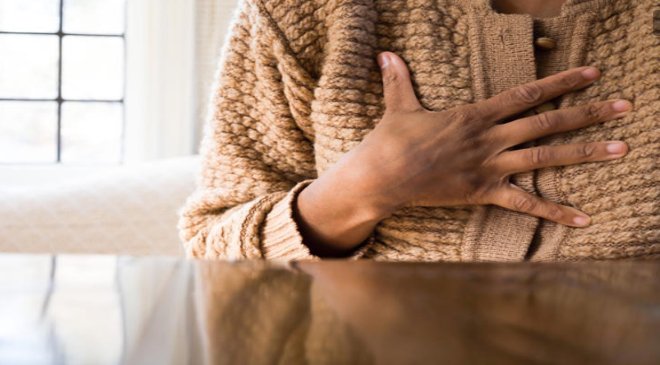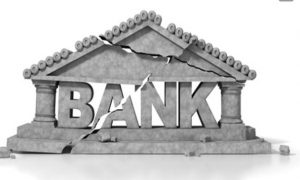There are many possible causes for pain on the right side of the chest. In fact, it’s one of the most common reasons people visit the emergency room, says Dr. Stephen Keithahn, an internist at the University of Missouri in Columbia, Missouri.
Also Read– What are the benefits of avocado oil for skin? Find out what the experts say
It’s not usually obvious why you’re having right-side chest pain.
“Our bodies do a good job of telling us when we’re in pain but don’t always do a good job communicating the cause and location of the pain,” says Dr. Brittany Kunza, a medical director with PlushCare, a virtual primary care and mental health platform.
Understanding Right-Side Chest Pain
When doctors try to pinpoint the cause of pain on the right side of the chest, they consider what’s located in that part of the body. This includes:
Also Read– The Unexpected Benefits Real Women Gained From Therapy
- Skin.
- Muscles.
- Ribs.
- Cartilage, a type of connective tissue.
- Pleura, which is a thin lining around the ribs and chest cavity.
- Lungs.
- Diaphragm.
- In women, the right breast.
However, pain can radiate from another part of the body to the right side of the chest. For instance, you may have an injury in your neck or shoulders, but the pain can also be felt on the right side of your chest, says Dr. Mary Ann Bauman, a Seattle-based internist and a spokeswoman for the American Heart Association.
Although the heart usually is located on the left side of the body, it may be shifted toward the right side in people with a rare congenital heart defect, called dextrocardia, says Dr. Pilar Stevens-Haynes, a cardiologist and director of echocardiography at Mount Sinai South Nassau in Oceanside, New York. This is why heart attack symptoms also can occur on the right side of the chest, not just the left side.
When to Seek Medical Attention
Not every cause of pain on the right side of the chest is serious, but some are. Any time you have pain on the right side of your chest, you should let your health care provider know. You should seek emergency care for right-side chest pain if you:
- Are coughing.
- Feel like you’re going to pass out.
- Have a much faster or slower heart rate than usual.
- Have pain that comes on suddenly and sharply and isn’t going away after a few minutes, or you have pain that is radiating to the jaw and arms. This could indicate a heart attack.
- Already have a respiratory illness.
- Have a fever.
- Have shortness of breath.
It’s important to rule out more serious causes of chest pain before assuming the pain has a less serious cause, says Dr. Linda Anegawa, an internist based in Honolulu.
Read More:- FDA authorizes first over-the-counter at-home test for both flu, COVID-19 viruses
Don’t be afraid to call 911 for chest pain, especially if it’s new for you or if the pain feels different or more severe, advises Dr. Karen Jubanyik, an associate professor in emergency medicine at Yale University School of Medicine in New Haven, Connecticut. That’s because there are resources on an ambulance to help diagnose and begin to treat problems like a heart attack. Paramedics can also get you to the hospital that’s best suited to treat your problem, which may not be the hospital closest to your house.
Causes of Chest Pain
Some of the most common possible causes for pain on the right side of the chest include:
- Anxiety attack.
- Collapsed lung.
- COVID-19
- Costochondritis.
- Gallbladder problems.
- Gastroesophageal reflux.
- Heart attack.
- Liver problems.
- Lung cancer.
- Musculoskeletal strain or injury.
- Pancreatitis.
- Pericarditis.
- Pleuritis.
- Pneumonia.
- Pulmonary embolism.
- Pulmonary hypertension.
- Rib fracture.
- Shingles.
Anxiety attack
Read More:- Coronavirus origins still a mystery 3 years into pandemic
An anxiety attack is caused by an overwhelming feeling of stress or worry. Symptoms of an anxiety attack vary but commonly include:
- An increased heart rate. You may think you’re having a heart attack.
- Feeling very worried or fearful.
- Shortness of breath.
- Nausea or a stomachache.
Anxiety and panic attacks have been common as we’ve moved out of an active pandemic and returned to life in person, Kunza says. That’s because of worries about being around other people and getting exposed to COVID-19.
Anxiety attacks usually last 10 to 30 minutes. If you’re not sure if you’re having an anxiety attack or a heart attack, see a health care provider to rule out other physical causes. If you’re prone to anxiety attacks and your provider has ruled out a heart-related cause, here are a few things you can do when you have an anxiety attack, Kunza recommends the following techniques:
- Do some deep breathing, inhaling for four seconds, holding your breath for seven seconds and exhaling for eight seconds.
- Talk with a friend or family member.
- Listen to soothing music.
- Take some time to rest.
Also Read– The Unexpected Benefits Real Women Gained From Therapy
Collapsed lung
Just as the name implies, a collapsed lung – medically known a pneumothorax – refers to air that pushes on the lung, making it collapse. It’s not always clear what causes a collapsed lung, but it’s sometimes attributed to an injury to the chest or damage caused by lung disease.
Another symptom of a collapsed lung is shortness of breath. You should call 911 if you think you have a collapsed lung, particularly if the pain is bad and if you have trouble breathing.
COVID-19
Pain in the chest from COVID-19 could occur on one or both sides of the chest. The pain could be caused by muscle strain from coughing or body aches from a fever, Anegawa says.
It’s also possible for pneumonia to occur due to COVID-19, and that can cause right-sided chest pain. Heart problems caused by COVID-19, such as heart failure or injury to the heart, also can contribute to chest pain on the right side. Blood clots can be more likely to occur in some people after having COVID-19, and that could lead to problems like a pulmonary embolism that can cause chest pain.
Costochondritis
Cartilage connects our ribs to the breastbone. Costochondritis is an inflammation of the cartilage in that area of the body. Symptoms of costochondritis include chest pain and pain that gets worse when you cough or take a deep breath.
Costochondritis can be caused by trauma to the chest area (like from an accident), excessive physical strain to the chest area or excessive coughing.
If you’re not sure what’s causing your chest pain but suspect it’s costochondritis, see a doctor to rule out more serious causes, such as a heart attack. Costochondritis is seen in a third to half of patients who come to the ER with chest pain, Anegawa says.
Gallbladder problems
Your gallbladder is located in the upper right corner of your abdomen. It stores a substance called bile, which helps your body break down fatty foods. Sometimes, pain on the right side of your chest radiates from the gallbladder.
Also Read- Want To Run Your Business Better? Then Run These 3 Reports.
There are several gallbladder problems associated with pain on the right side of your body, including an infection, gallstones or inflammation of a bile duct, which is one of the tubes in the gallbladder that transports bile in your body.
Other symptoms associated with gallstone problems include:
- Chills.
- A fever.
- Nausea.
- Vomiting.
- Lighter-colored stools.
You should seek immediate medical attention if you suspect you have one of these gallstone-related issues.
GERD
GERD, which is short for gastroesophageal reflux disease, is also called acid reflux. It’s caused by acid that comes from the stomach up to the esophagus. GERD is a common cause of pain on the right side of your chest. Other symptoms of GERD include:
- A bitter taste in your mouth.
- A chronic cough not connected to a respiratory illness.
Although GERD isn’t serious, it can be uncomfortable. If you think you’re experiencing GERD, try over-the-counter medicines such as antacids to help. If GERD’s symptoms continue to bother you a couple of times each week, set a non-urgent appointment with your doctor.
Read More:- Coronavirus origins still a mystery 3 years into pandemic
Heart attack
Although most people’s hearts are located toward the left side of their body, right-side chest pain still can be associated with a heart attack. Other symptoms of a heart attack include:
- Dizziness.
- Nausea.
- Shortness of breath.
- Pressure or pain felt in the arms, jaw, neck or back.
The symptoms of a heart attack can be a little different for each patient. They also can be different symptoms in men versus women, says Dr. Sunitha D. Posina, a board-certified internist and locum hospitalist in New York City. For instance, women may not feel the same pressure-like pain that men feel. Women also may experience fainting, indigestion and a lot of fatigue – symptoms that are not as common in men.
Call 911 if you think you are having a heart attack.
“Don’t assume if pain is on the right side that it can’t be cardiac pain,” Bauman cautions.
Also Read:- Antibiotics don’t work against a strain of a nasty stomach bug – and doctors are concerned
Liver problems
Because pain from one part of the body can radiate to another part of the body, liver problems may end up causing pain on the right side of the chest, Jubanyik says. Deaths from alcoholic-associated liver disease and nonalcoholic fatty liver disease increased during the pandemic, according to a 2023 report in the Journal of Hepatology. An increase in alcohol use during the pandemic to help cope with stress and anxiety contributed to the rise in liver disease-related deaths, according to the National Institute on Alcohol Abuse and Alcoholism.
The increase in alcohol consumption in 2020 is expected to lead to 8,000 more deaths from alcohol-related liver disease by the year 2040 as well as 18,700 more cases of liver failure and 1,000 cases of liver cancer, according to estimates published in 2021 in the journal Hepatology.
Some liver problems that also may cause pain in the chest include:
- Alcoholic hepatitis, an inflammation of the liver caused by alcohol.
- Cirrhosis, or late-stage liver disease.
- Fatty liver, or an increased fat build-up in the liver.
Typically, you’ll work with your primary doctor or a specialist to manage these liver diseases.
Also Read– Millions who rely on Medicaid may be booted from program
Lung cancer
Depending on the location of the tumor or tumors caused by lung cancer, a person can have pain on the right side of the chest. Other symptoms associated with lung cancer include:
- An unexplained cough.
- Feeling more tired.
- Weight loss for no apparent reason.
Smoking is the largest risk factor for developing lung cancer. Set an appointment with your health care provider if you have these symptoms.
Lung cancer in earlier stages is associated with better outcomes, but early lung cancer may not have any symptoms. The U.S. Preventive Services Task Force recommends screening for lung cancer if the following apply to you:
- You’re 50 to 80 years old.
- You have a 20 pack-year history of smoking. In other words, you’ve smoked a pack a day for 20 years or two packs a day for 10 years.
- You currently smoke or have quit in the past 15 years.
Musculoskeletal strain or injury
You can cause an injury to your chest area after a heavy cough or after strenuous activity such as exercise, Stevens-Haynes says.
If this type of injury occurs and you have pain on the ride side of the chest, let your provider know. However, if you otherwise feel OK, it doesn’t need to be an urgent appointment. Your doctor may recommend over-the-counter pain relievers or heat/ice therapy.
Also Read- Want To Run Your Business Better? Then Run These 3 Reports.
Pancreatitis
Pancreatitis is inflammation of the pancreas, an organ behind the stomach that helps with digestion and management of blood sugar. Pancreatitis is often caused by alcohol or a viral infection. From 2019 to 2020, deaths from alcohol-induced pancreatitis increased by 50%, the National Center for Health Statistics reports.
Pancreatitis can lead to chest pain that may be felt on the right side of the chest, Jubanyik says. Other symptoms associated with pancreatitis include:
- Fatigue.
- Nausea or vomiting.
- Poor appetite.
- Abdominal pain.
- If you have the symptoms of pancreatitis and severe stomach pain, call 911 or go to the emergency room for treatment. Untreated or severe pancreatitis can be life-threatening.
- Pericarditis
- There are two layers of tissue, called the pericardium, that surround the heart and help to hold it in place. When there’s an inflammation of this tissue, it’s called pericarditis. Chest pain is a common symptom of pericarditis. The pain can feel like the pain from a heart attack. The pain can also feel worse with taking a deep breath similar to the pain from a heart attack. It tends to be positional, worse when you lay flat and better when you lean forward.
- However, the pain also can be caused by different things, such as a heart attack. It also can be caused by an infection, injury or heart surgery. Because you may not know the exact cause, seek immediate medical attention if you suspect pericarditis.
Also Read– The 5 best locations for a vending machine if you want to start a 6-figure side hustle
Pleuritis
On the outside of the lungs and inside your chest cavity there’s a thin membrane called the pleura. Pleuritis (or pleurisy) is the name for an inflammation in the pleura. Usually, there is fluid that coats the layers of the pleura. If you have pleuritis, the layers rub against one another and cause pain. It also can cause shortness of breath and a cough.
The cause of pleuritis isn’t always clear, although an infection is one possible culprit. See your doctor if you think you might have pleuritis.
Pneumonia
Pneumonia is an infection in one or both of your lungs. Symptoms of pneumonia, in addition to pain on the right side or both sides of the chest, include:
- Pain that’s worse when you cough.
- Coughing.
- A fever.
- Feeling more fatigued.
Pneumonia can be especially serious in those who are over age 65 and who have heart problems or chronic lung disease. See a doctor promptly if you think you have pneumonia.
Pulmonary embolism
A pulmonary embolism is a block that occurs in one of the lung’s pulmonary arteries. Most pulmonary embolisms are caused by a blood clot that starts in the leg and moves to the lungs. Symptoms associated with a pulmonary embolism include:
- Chest pain. This is one of the most common symptoms with a pulmonary embolism, Jubanyik says.
- Dizziness.
- A fever.
- An irregular heartbeat.
Risks for pulmonary embolism include:
Also Read– 7 Gold Stocks to Buy for the Forward-Thinking Contrarian
- Long periods of being immobile. This could be due to the type of job you have, such as a desk job or driving a truck or bus, Jubanyik says.
- Increased clotting risk, which can be genetic or related to conditions like cancer.
- Past history of pulmonary embolism.
- Recent surgery, particularly if the surgery was in the lower extremities.
A pulmonary embolism can be life-threatening, so seek immediate medical attention if you think you have this condition.
Pulmonary hypertension
Pulmonary hypertension is a type of high blood pressure in the arteries of the lungs and the heart. It tends to get worse over time. Causes include high blood pressure, coronary artery disease and genetics.
Symptoms associated with pulmonary hypertension are:
- Fainting.
- Heart palpitations.
- Shortness of breath.
- Feeling weak.
Pulmonary hypertension is more common in people with HIV/AIDS, chronic obstructive pulmonary disease and sickle cell disease. You may see a doctor if you believe you have mild or early signs of pulmonary hypertension. Other times, the signs are severe enough to require a visit to the emergency room. This would include worsening shortness of breath, coughing up blood and loss of consciousness, along with chest pain.
Rib fracture
A rib fracture is most commonly caused by an injury to the ribs. The pain from a rib fracture on the right side of the chest may get worse when you cough, laugh or sneeze. You also may have swelling or bruising near where the fracture occurred.
Seek immediate medical attention if you think you have a rib fracture. If you had an accident or injury, there could be other internal organ damage requiring treatment, Posina says.
Read More:-Small businesses need the Credit Card Competition Act
Shingles
Shingles, by a virus called varicella-zoster, is also the cause of chickenpox. Once you have chickenpox, that virus stays in your body. However, late in life, it can reactivate in your body as shingles.
Shingles often causes a painful rash or blisters on the left or right side of your torso. Pain can precede or follow the development of a rash or blisters. If it’s on the right side of your body, it can cause pain on the right side of your chest. The pain from the virus is a type of nerve pain, which extends in a line pattern called dermatomal distribution.
If you notice a rash or blisters along with right-side chest pain, call your doctor promptly, Bauman advises. There are antiviral treatments for shingles, but they need to be started early. There also is a shingles vaccine for those aged 50 or over to help prevent a shingles attack.
Finding the Cause of Right-Side Chest Pain
Also Read- 10 Signs Your Business Has Outgrown Its SaaS Vendor
Right-side chest pain is often uncomfortable, and some of its causes require prompt treatment. Pay attention to other symptoms you have along with chest pain. Contact a health care provider when in doubt, even if you think it’s a small problem.





































